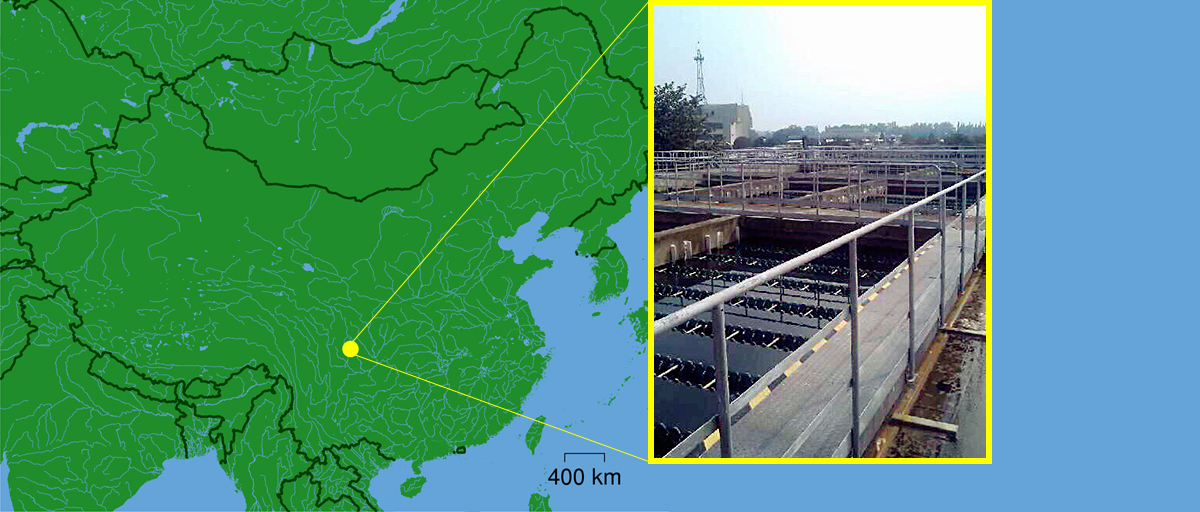Opening up public infrastructure to private sector finance: UNIDO’s pioneering role in China
21 November 2017 Charles ARTHUR

Chengdu is the provincial capital of Sichuan Province in southwest China. In 1964, there were just over one and half million inhabitants. Within twenty-five years, the population had exploded to over nine million.
When China’s grand economic reform kicked off in 1978, the economy started to grow rapidly. Across the country, population growth began to skyrocket and the strains on existing infrastructure started to increase proportionally.
Chengdu was one of many cities that began to suffer from water-supply shortages. There was an urgent need for new water facilities and the rehabilitation of existing ones.
In its search for a viable strategy to manage expenditures on infrastructure development and operation, the Chinese authorities turned to the United Nations Industrial Development Organization (UNIDO).
UNIDO-China cooperation
In 1985, UNIDO and the Ministry of Light Industry co-organized a one-month training programme on foreign investment in Guangdong Province. This was followed by a series of investment promotion activities in other provinces. UNIDO offered professional technical services through these programmes and supported China in learning how to absorb foreign investment.
This cooperation led to UNIDO supporting the State Planning Commission in formulating regulations to establish standard concession agreements for Build-Operate-Transfer (BOT) projects in the road, power and water sector. In 1995, a draft law – the BOT Circular - created a model for BOT ‘pilot projects' programme.
The BOT Circular was a turning point for foreign investment in and financing of key infrastructure projects in China. It led to the first legal foundation for private sector involvement and foreign capital investment in Chinese infrastructure.
Chengdu No.6 Water Plant
One of the first three BOT projects in China was the construction of the Chengdu No.6 Water Plant. The project, beginning in 1999, was designed and executed by a joint venture comprising the French Companie Generale Des Eaux (CGE) and the Japanese company, Marubeni, which received the rights to operate it for a period of 18 years.
Comprising a water intake facility with a capacity of 800,000m3 per day, a water treatment plant with a capacity of 460,000m3 per day and a 27km transmission line to urban areas, the Chengdu No.6 Water Plant increased the piped water supply to the growing population and to the developing industrial zones in the region.
This project introduced new technology that processed treated water in a cost-effective manner and provided training in best practices for the management and operation of water treatment facilities.
An Asian Development Bank report states that “without the public-private partnership, the city of Chengdu would not have been able to expand its water supply capacity so quickly or be equipped to meet the demand for a growing economy”.
Investing in clean water was important for the region’s industrial development. Today, Chengdu is one of the most important economic, financial, commercial, cultural, transportation, and communication centres in Western China. The main industries are machinery, automobiles, medicine, food, and information technology.
Build-Operate-Transfer
The Build-Operate-Transfer (BOT) model originates in the late 1970s and early 1980s, when some of the major international contracting firms and some developing countries began to explore the possibility of promoting privately owned and operated infrastructure projects financed on a non-recourse basis under a concession-type arrangement. (According to Mark Augernblick and B. Scott Custer Jr. in their World Bank paper, The build, operate, and transfer ("BOT") approach to infrastructure projects in developing countries, the term "BOT" seems to have been coined in the early 1980s by Turkey's Prime Minister, Turgut Ozal.)
The BOT structure for projects is a form of private-public partnership that enables private participation in the development of public infrastructure. The essence of the BOT structure is that the private sector takes responsibility for the detailed design, construction, commissioning and operation of a particular project. In return, it receives a payment for providing the services once operational, either from the public sector or from users, in the form of a long-term contract. After an agreed period (typically between 10 and 30 years), the project is transferred back to the public sector. Finance for BOT projects is usually provided by equity investors, such as private construction or equipment companies, but also comes from bank loans. Public sector partners may also take an equity holding and subsidized loans.
UNIDO Guidelines
As the strategic importance of BOT projects for developing countries grew in the 1990s, UNIDO was increasingly asked by member states to provide information, advice and guidance on the elaboration of these projects. In response to this need, in 1996, UNIDO published Guidelines for Infrastructure Development through Build-Operate-Transfer (BOT) Projects to provide both a general overview of the conceptual, legal and financial issues associated with BOT projects and practical guidance for project development, negotiation and implementation. UNIDO also provided a comprehensive BOT advisory and training programme.
BOT arrangements have been very successful in opening up public infrastructure to the private sector finance. Many developing countries have promoted infrastructure projects based on a BOT basis,and the approach is still promoted by the World Bank as a way of addressing infrastructure challenges.
UNIDO continues to support responsible investment in productive activities and sees investment in infrastructure – transport, irrigation, energy and information and communication technology – as crucial to achieving inclusive and sustainable industrial development. In this context, UNIDO’s Programmes for Country Partnership and its international network of Investment and Technnology Promotion Offices (ITPOs) contribute to the 2030 Agenda for Sustainable Development and in particular to Sustainable Development Goal 9 - Build resilient infrastructure, promote inclusive and sustainable industrialization, and foster innovation.
By Charles Arthur and Danilo De Oliveira Pereira (The authors are grateful to Ricardo Seidl da Fonseca for assistance with this article)
Further reading
UNIDO Investment Promotion: a retrospective
The 2030 Agenda for Sustainable Development: Achieving the industry-related goals and targets
Eradicating poverty and promoting prosperity: the role of industrialization